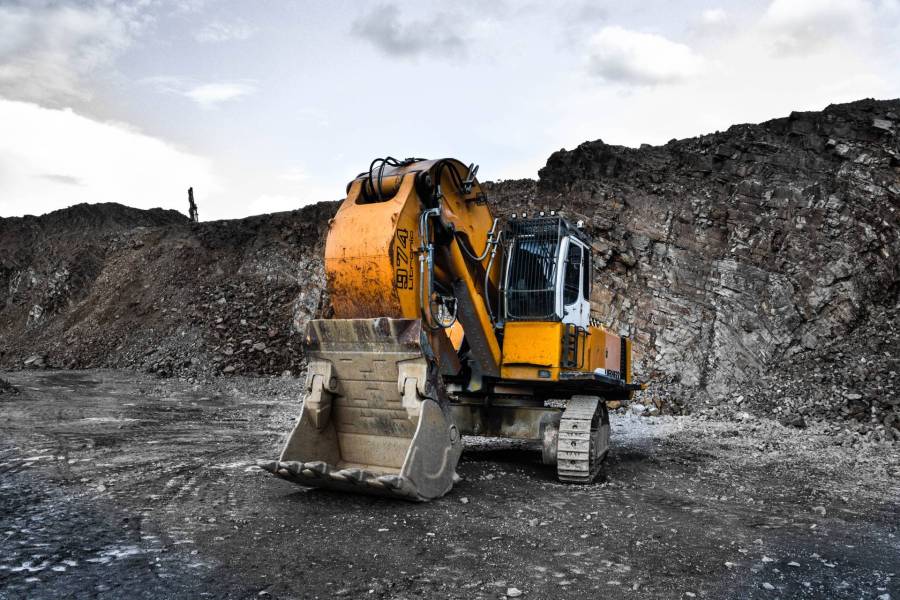Understanding Original Equipment Manufacturers (OEMs)
Original Equipment Manufacturer (OEM) refers to a company that produces and supplies components, assemblies, or finished products to other companies, which then use these parts in the assembly or construction of their own products.
These OEM-produced components are typically designed and tailored according to the specifications provided by the client company. The term “OEM” may also imply that the final product carries the branding of the client company, not the manufacturer.
Key Takeaways
- Original Equipment Manufacturers (OEMs) are companies that produce components, parts, or subsystems used in the final assembly of another company’s end product. They play a crucial role in the supply chain for various industries, such as automotive and electronics.
- OEMs often offer cost-effective solutions for companies needing to source specific components for their products. By working directly with an OEM, the purchasing company can reap the benefits of economies of scale, specialized production capabilities, and reduced lead times for procurement.
- Establishing a partnership with an OEM can lead to long-term collaborations, as both parties work together to improve product quality, streamline production processes, and drive technological innovation. This can result in increased efficiency, reduced costs, and an overall competitive advantage for the businesses involved.
Featured Partner for Equipment Parts on EquipmentShares's website
|
Why are Original Equipment Manufacturers Important?
The term Original Equipment Manufacturer (OEM) holds significant importance in the equipment and construction industry as it refers to companies that produce and supply original parts and components for a product.
These OEM companies are crucial for maintaining quality, performance, and compliance standards within the industry.
By collaborating with OEMs, businesses can ensure seamless integration, optimum functionality, and adherence to specific design and safety specifications for their equipment or projects.
Additionally, relying on OEM parts and components guarantees that products meet warranty requirements, reduce potential liabilities, and maintain a higher resale value. In essence, OEMs play a vital role in sustaining the integrity, reliability, and long-term success of various equipment and construction projects.
Featured Partner for Equipment Parts on EquipmentShares's website
|
How Original Equipment Manufacturers Work
Original Equipment Manufacturers, commonly referred to as OEMs, serve a crucial role in various industries, including automotive, electronics, and construction equipment. Their primary purpose is to design, manufacture, and supply components, assemblies, or systems that are included within a finished product or system sold by other companies, known as value-added resellers or VARs.
As specialists, OEMs contribute to the performance, durability, and overall quality of the end products that people use on a daily basis. For instance, an OEM may provide essential components like engines, transmissions, or braking systems for automakers, exerting a significant influence on the reliability and efficiency of the vehicles they produce.
Collaboration with OEMs enables value-added resellers to focus on their core competencies, such as marketing, distribution, and after-sales support, while leveraging the expertise of OEMs in research, development, and manufacturing specific components. The partnership between OEMs and VARs drives the production of higher quality products and fosters continuous innovation in the market.
Additionally, OEM components are often sought after in the aftermarket for repairs and maintenance, as their use ensures that the replacement parts are as close to the original components as possible, maintaining the product’s performance standards. This interconnected relationship between OEMs and VARs demonstrates the critical purpose of original equipment manufacturers in today’s dynamic marketplace.
Featured Partner for Equipment Parts on EquipmentShares's website
|
OEMs Versus ODMs
OEMs and ODMs are two distinct types of companies that play different roles in the manufacturing and supply chain process. Here are the key differences between them:
Product Development
OEMs are involved in the entire product development lifecycle. They conceive the idea, conduct market research, design the product, and manage the engineering and manufacturing processes. OEMs focus on creating unique products that differentiate them from their competitors.
On the other hand, ODMs are primarily focused on the manufacturing aspect of the product development cycle. They collaborate with OEMs to convert their specifications and requirements into a finished product. ODMs have expertise in manufacturing processes, cost optimization, and scalability.
See also: Have You Heard of These 6 Amazing Ways to Use AI In Construction
Branding and Marketing:
OEMs build and market products under their own brand names. They invest in marketing strategies, brand recognition, and customer loyalty. OEMs often have a direct relationship with customers and handle sales, distribution, and after-sales support.
Contrarily, ODMs do not market products under their own brand. Their role is to produce goods based on the specifications provided by the OEMs. ODMs typically remain anonymous to end-users and rely on the OEMs to handle branding, marketing, and customer support.
Intellectual Property (IP) Ownership:
As the creators and designers of the products, OEMs retain the intellectual property rights associated with their products. They have control over the design, patents, trademarks, and other IP elements related to their branded products.
Instead, ODMs operate based on the specifications provided by the OEMs. The intellectual property rights associated with the products generally belong to the OEMs, unless there are specific agreements stating otherwise.
Supply Chain Relationships:
OEMs usually have a network of suppliers and contractors to source components and parts required for their products. They manage the overall supply chain and coordinate with various vendors and manufacturers.
ODMs, on the other hand, often have established relationships with manufacturers and suppliers. They leverage these connections to procure raw materials and components necessary for the production process. ODMs focus on efficient production and assembly operations.
Featured Partner for Equipment Parts on EquipmentShares's website
|
OEMS Versus Aftermarket Parts
OEMs (Original Equipment Manufacturers) and aftermarket parts refer to different types of products in the context of automotive and other industries. Here are the key differences between them:
Quality and Standards:
OEM parts are known for their high quality and reliability because they are manufactured according to the same standards as the original parts. They are designed to meet the specific requirements of the vehicle, ensuring optimal performance, fit, and safety.
The quality of aftermarket parts can vary significantly. While some aftermarket parts may meet or exceed OEM standards, others may be of lower quality. It’s important to research and choose reputable aftermarket brands to ensure the quality and compatibility of the parts.
Availability:
OEM parts are typically available through authorized dealerships or authorized parts distributors. They may also be available through online platforms or directly from the OEM. However, OEM parts are generally more expensive compared to aftermarket parts.
Aftermarket parts are widely available through various channels, including independent auto parts stores, online retailers, and local repair shops. The aftermarket industry offers a broad range of options, allowing consumers to choose from different brands, qualities, and price points.
Price:
OEM parts tend to be more expensive compared to aftermarket parts. This is partly due to the higher quality and the fact that they are produced by the original vehicle manufacturer. Additionally, OEM parts often come with warranties that can contribute to the higher cost.
Aftermarket parts are generally more affordable than OEM parts. The competitive nature of the aftermarket industry can lead to a wide range of pricing options, allowing consumers to choose parts that fit their budget.
Warranty:
OEM parts often come with a warranty provided by the vehicle manufacturer. These warranties usually cover defects in materials or workmanship and may vary in duration depending on the part. Using OEM parts during repairs or replacements may help maintain the original vehicle warranty.
Warranty coverage for aftermarket parts varies depending on the manufacturer and retailer. Some aftermarket brands offer warranties that are comparable to OEM warranties, while others may provide limited or no warranty coverage. It’s important to review the warranty terms and conditions before purchasing aftermarket parts.
Featured Partner for Equipment Parts on EquipmentShares's website
|
Examples of OEMs
Takeuchi
Takeuchi is a Japanese company that specializes in the manufacturing of construction machinery, primarily compact excavators, compact track loaders, and compact wheel loaders. As an OEM, Takeuchi manufactures these construction machines and sells them to other companies or equipment dealers who then brand and market them under their own names.
Volvo
Volvo, a renowned name in the automobile sector, also has a construction equipment division called Volvo Construction Equipment. They manufacture road construction and maintenance equipment, as well as machinery used in construction, mining, and infrastructure projects. Their product range includes wheel loaders, excavators, articulated haulers, and compact equipment like skid steer loaders and compact excavators.
John Deere
Known primarily for its agricultural machinery, John Deere is also an Original Equipment Manufacturer in the construction equipment industry. They produce a wide range of equipment, such as backhoes, loaders, excavators, and motor graders, which are used in various sectors, including construction, agriculture, forestry, and landscaping. Their equipment is designed to provide high performance, durability, and ease of operation, catering to the needs of construction projects across the globe.
Featured Partner for Equipment Parts on EquipmentShares's website
|
Frequently Asked Questions(FAQ)
Q1: What does Original Equipment Manufacturer (OEM) mean?
A1: Original Equipment Manufacturer, commonly known as OEM, refers to a company that produces parts, components, or complete equipment that are used as essential components in the construction or assembly of another company’s final product.
Q2: What is the difference between OEM and aftermarket parts?
A2: OEM parts are produced by the original manufacturer of the equipment or vehicle and are typically designed to meet precise specifications. Aftermarket parts, on the other hand, are made by third-party manufacturers and may vary in quality, fit, and design.
Q3: Why choose OEM parts over aftermarket parts?
A: OEM parts tend to have a higher quality, as they are produced by the original manufacturer. They usually come with a warranty, ensure a perfect fit, and maintain the integrity of the equipment or vehicle. While aftermarket parts can be less expensive, they might not offer the same quality, reliability, or compatibility as OEM parts.
Q4: Are OEM parts more expensive than aftermarket parts?
A: Generally, OEM parts are more expensive than aftermarket parts due to their guaranteed quality, fit, and performance. However, the cost difference can vary depending on the specific part and brand.
Q5: Where can I purchase OEM parts for my equipment?
A: The most reliable source for purchasing OEM parts is through the equipment manufacturer or through an authorized dealer. This ensures you receive genuine parts with the expected quality and performance. Our partner EquipmentShare has a reliable online marketplace for getting the OEM parts you need to keep your equipment running.
Q6: Do OEM parts come with a warranty?
A: Most OEM parts come with a warranty provided by the manufacturer, which guarantees the part’s quality and performance for a certain period or specific conditions. The warranty’s length and coverage may vary depending on the manufacturer and the specific part.
Q7: How can I identify if a part is OEM or aftermarket?
A: OEM parts usually have the manufacturer’s logo or identification markings on the product’s packaging or the part itself. To ensure a part is genuine, purchase it from a reputable source, such as the original equipment manufacturer or an authorized dealer.
Q8: Can using aftermarket parts void my equipment’s warranty?
A: Using aftermarket parts can potentially void your equipment’s warranty, depending on the manufacturer’s warranty terms and conditions. It’s essential to review your equipment’s warranty information and consult with the manufacturer or an authorized dealer if unsure. This is almost always true. Typically, if an OEM part is not available, you may get special permission from a manufacturer to use an aftermarket part.


















